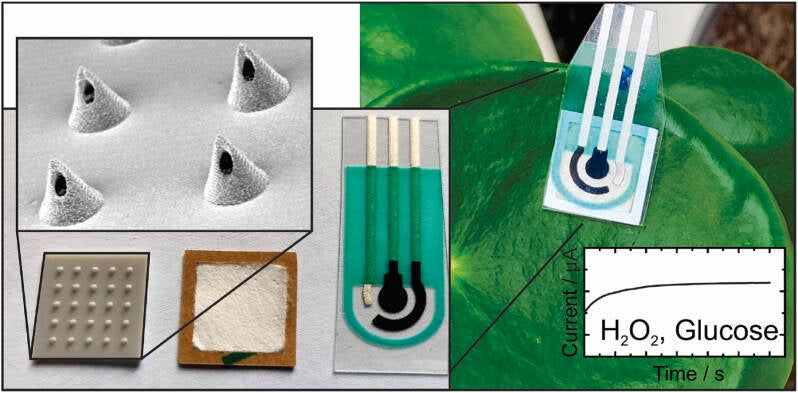Translational Biosensing: From Paper to Wearables
I engineer point-of-care biosensors that progress from paper-based assays to wearable microneedle platforms. By combining nanomaterials, microfabrication, and smartphone analytics, we push Lateral Flow Assays (LFAs) and wearable devices toward ultra-sensitive, multiplexed readouts.
Next Generation LFAs
I improve lateral flow assays by combining nanomaterial labels, fluidic control, and advanced readouts to push sensitivity and quantitation at the point of care. Early work introduced iridium-oxide nanoparticle labels and time-delay wax barriers to boost signal and extend assay performance, followed by a ratiometric fluorescent strategy that tunes dynamic range and mitigates matrix effects. As corresponding author, I have delivered single-step formats for clinically relevant targets (e.g., penicillin-G allergy screening) and leveraged Europium nanoparticles to break the picomolar barrier. I also integrate smartphone analytics for quantitative LDH testing and develop a portable electrophoretic LFA to actively transport analytes and achieve ultra-sensitive detection in serum. Together, these innovations move LFAs beyond yes/no strips toward robust, low-cost, and clinically meaningful quantification.

Food Safety
I develop quantitative biosensing tools to monitor food allergens with high sensitivity and reliability. As corresponding author, I reported a DVD-based multiplex array that simultaneously quantifies six major allergens in commercial foods for children, enabling rapid, cost-effective screening at scale. I also introduced a lateral flow microimmunoassay (LFµIA) that delivers trace-level, quantitative allergen detection in complex food matrices, moving beyond binary yes/no strips. Across these studies, I emphasise rigorous validation—calibration models, limits of detection, and cross-reactivity assessment—to approach regulatory-grade performance. The overarching goal is to translate multiplex, low-cost, point-of-need assays to industry and public-health settings, reducing accidental exposures and strengthening labelling confidence.

Wearable Biosensors
I design minimally invasive, wearable biosensors built on 3D-printed hollow microneedle arrays to sample and analyse biofluids in situ. As corresponding author, I integrated microneedles with a lateral flow immunoassay to create a point-of-care patch that monitors wound-healing biomarkers directly from exudate, enabling rapid, instrument-free readouts. In complementary work as co-first author, I developed an electrochemical microneedle device for real-time sensing in plant tissue, demonstrating the platform’s versatility beyond human health. Across these studies, we leverage additive manufacturing for precise geometry, reliable penetration, and scalable production, while preserving biocompatibility and signal stability. Our goal is to translate microneedle-based wearables into practical tools for continuous, low-cost monitoring across clinical, environmental, and agricultural settings.
